





















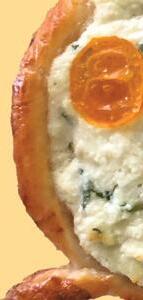























































































































































































































































































Can you help the Asian Elephants make their way from Melbourne Zoo to their new home at Werribee Open Range Zoo? Elephant herds are matriarchal – which means they live in female-led groups. DID YOU KNOW?
Answers on page 17
Asian Elephants live, on average, up to 70 years in the wild.

The 4 transportation crates taking the elephants to their new home at Werribee Open Range Zoo are made from 7 cargo shipping containers (welded together).
















It’s the first-time moving house for Mali and the three young elephants (Aiyara, Roi-Yim and Kati).








Luk Chai’s transportation crate is the biggest at 4.2m high!
The total weight of the herd (that’s 9 elephants) is 21,930kg.
You can spy the elephant crates at Melbourne Zoo in the paddock next to the Elephant Barn.
Adults Luk Chai, Dokkoon, Kulab, Mek Kapah and Num-Oi have all done a move before.
The distance the elephants will travel from Melbourne Zoo to Werribee Open Range Zoo is 36km.


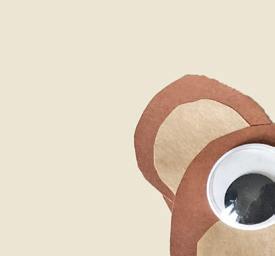


MAKE THE PERFECT CARD FOR YOUR PRIMATE-LOVING FRIEND!





















Pencil

Dark brown craft paper
Light brown craft paper
Scissors
Glue
Small googly eyes
Black felt-tip pen



Name: Hamadryas Baboon


Conservation status: Least Concern
Habitat: north-east African savannah
Diet: grass, seeds, leaves and the roots of plants.


Social: they live in groups with one male leader, several females and offspring. Males not in family units live alone.
Visit: see them at Melbourne Zoo.













Remember to always ask an adult to help when using scissors.






























1
Fold the dark brown craft paper in half. Using the pencil, trace the shape of one of your hands on the dark brown paper (make sure the pinky finger lines up with the crease of the paper).


Cut out the hand shape using scissors. It should open and close like a card.





Using the light brown paper, cut two small semi-circles (half the size of the ear semi-circles) and one small oval (half the size of the face circle).

2 3 7 4 8 5 6 9
Cut out a small circle shape (for the face) and two semi-circle shapes (for the ears) on the dark brown paper.

Glue the light brown oval to the bottom of the face circle and the two small light-brown semicircles to the bottom of the dark brown ear semi-circles.

Glue the ears to the top edge of the circle and the googly eyes on the face. Draw a nose and mouth using the black felt tip pen.





Glue the face shape onto the thumb of the hand shape.


Cut out a curly tail from the dark brown card and glue to the bottom of the palm of the hand.
Write a message in your card and gift it to a friend or family member.










































































Egg carton
Scissors
Paints






Get crafty at home and make a Bogong Moth from an egg carton.


Glue

Paint brush
Pipe cleaners















Cut out the peaks in the middle of the egg carton. Then cut the peak in half lengthways.







Paint the top of the triangle to create your unique moth. Allow paint to dry.

4
For legs, cut the pipe cleaner into three parts and glue them to the underside of the cardboard triangle. Allow glue to dry.








grey-brown with dark mottles and distinct eye spots on their wings. Use your creativity to paint your moths to be whatever colours and patterns you like!




























2





Trim the bottom of the triangle to resemble moth wings.






5



Now your Bogong Moth is ready to make the migration to Australia's alpine zone.
















Look up to the sky in spring and you might spot some of these constellations.

Bogong Moths use the stars and the Earth’s magnetic field to guide them to the alpine region where the Mountain Pygmy-Possum wakes up from their annual hibernation.

Scorpio is one of the most distinct constellations in the solar system. It looks a bit like a J. DID YOU KNOW?






























If you’re lucky, you might spot the International Space Station passing through the sky in September – look for a bright light moving slowly across the sky. DID YOU KNOW?









On the 22 September this year we will experience the spring equinox, when the sun is directly above the Earth’s equator at midday. This means that no matter where you are in the world, day and night will be equal in length. The Earth typically spins on a tilt but at spring equinox (and in March) it is more upright – meaning it doesn’t tilt towards nor away from the sun.

Unfortunately, during spring the stars that make up the magnificent Southern Cross are difficult to see – this is because they are lower on the horizon. However, the two pointer stars that help you to locate the Southern Cross (Alpha and Beta Centauri) will be shining extra brightly. Look to the north and you might spot Sagittarius (the archer centaur) or Scorpio in the west of the sky – within the body of the scorpion you might see red giant star Antares.




















A BOOK

Scan the code and answer the question to go into the running to win one of four Mountain Pygmy-Possum books.





Eye-spy with my little eye some stripes, a hump and a horn!



















BRING THIS ACTIVITY ALONG WHEN YOU VISIT WERRIBEE OPEN RANGE ZOO AND TICK OFF THE ANIMALS YOU SPOT FROM THE SAFARI BUS.


This species of African antelope can be easily spotted because of the bright white spots and stripes running across its back. You’ll see groups of Nyala grazing together on the savannah.













These majestic creatures often live in small herds – including a stallion (male) and several mares (female) and foals. You might see them playing together in water and muddy puddles or rolling in dust on the savannah.














The world’s tallest living land animals, these longnecked giants can grow taller than three adult humans (if they were standing on each other’s shoulders). They spend most of their day eating leaves and plants.






Oh dear, you’ve zoomed your binoculars in too far! it’s

Can you match the right animal to their closeup?












Answers on page 17



It’s normal for ostriches in the wild to live in harmony with other herd animals such as zebras and antelopes – which you might be lucky to see on your safari trip. These grazing animals stir up insects and rodents which are ostriches’ favourite food.

DID YOU KNOW?
It’s hard to miss the distinct black and white stripes of the zebra herd on the savannah!
If you don’t spot their stripes first, you might see these playful and social creatures galloping around.






Look for the single hump on these magnificent beasts as they roam the savannah. They can drink up to 3 litres of water at a time and then go for long periods without drinking. Although many people think they store the water in their hump, it’s not true!
The largest mammal in North America, this hairy creature will have an especially thick coat in winter to protect it from the cold. You may also have heard it called a ‘buffalo’.





























Southern White Rhinoceros love to wallow in the mud, which has protective properties as a sunscreen, insect repellent and antiseptic. Their horns are made of keratin, the same as human fingernails and hair.








































































2 x sheets of puff pastry
3/ 4 cup ricotta cheese
1 / 2 cup feta cheese

1
Preheat the oven to 180°C (for fan forced) or 200°C (for a standard oven).



These delicious pastry treats will swim right into your lunchbox.
3 tbsp chopped basil leaves (or 2 x tsp dried basil leaves)
1 tsp dried oregano



In a bowl, combine the ricotta, feta, basil leaves and oregano. Mix together until it’s well combined.













Punnet of cherry tomatoes (sliced)
1 x tsp olive oil
Eggs
2 3


Using a knife (ask an adult for help), cut the pastry into four even squares. Then, cut out a circle from the individual squares.













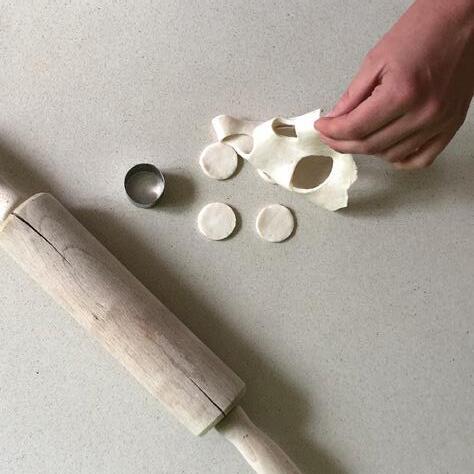

Roll the offcuts of pastry out into a big sheet using a rolling pin. From the pastry sheet, cut circles for the head (you could use a cookie cutter) and four legs for each turtle.









Cut out a rectangle of baking paper and place on a baking tray. Place the turtle tartlets onto the tray.





















Spread the cheese mixture onto the centre of the pastry circle. 6 4 Colour in! 7 over
Place four slices of tomato on each turtle. Drizzle oil and sprinkle salt over the top.
Attach the legs and head by pressing them gently onto the edge of the pastry circle. Using the knife, score (don’t slice all the way through) a smaller circle 1cm from the edge of your pastry circle.


9

In a small bowl, beat the egg. Use the egg mixture to paint around the edges of the puff pastry.





8 5 10








Place the tray into the oven and cook for 20 minutes (until the pastry looks golden brown).



























Make a wall hanging using leaves, sticks and feathers you’ve found in your garden or at the park.















Scissors









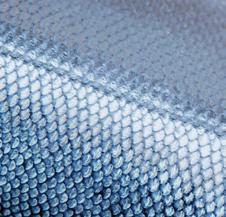

































YOU grows our





Hair, fur and scales are made from . It’s the protein that also skin’s outer layer (the epidermis).












String

Feathers




Medium-length stick










Gum nuts

Different coloured and shaped leaves
Hole punch




























The number of feathers on a bird can be different depending on the species. Some small birds have between 1,500 and 3,000 feathers and bigger birds, such as swans, might have as many as 25,000.




















of skin growing to maintain healthy skin and scales. Sometimes it can help


heal a wound or get rid of parasites on the outside of their body.



Cut a piece of string, 50cm long, and tie the ends to either ends of the stick. Cut two more pieces of string, each 30cm, plus one 40cm long. Tie the two shorter pieces to the end of the stick and the longer piece in the middle (so they hang down).

Take one of the strings and weave it through the leaves. Tie a feather halfway down your row and repeat threading more leaves.





Continue decorating the remaining two string lengths with leaves, feathers and gum nuts. Then, find a place to hang your creation.




Divide your leaves into even piles. This will make the process of arranging and making your wall hanger much easier.

When you get near the end of your length of string tie a single gum nut to the end. This will help add some weight to your hanger.

6 1 7 4 5 3

Using the hole punch, cut two holes (one on each side) into each leaf.

finish one length.
DID YOU KNOW?
The Bison at Werribee Open Range Zoo lose a layer of fur in summer to help keep them cool in the heat.
2 Visit Mishka at Melbourne Zoo
Fur and hair on mammals help to keep them warm in the winter and cool in the summer. It’s called thermoregulation.


Take a walk in your neighbourhood in the early morning or when the sun is going down to spot some of our native species becoming active. Take an evening walk in your neighbourhood or in a park near your house. Don’t forget to take a torch and an adult!





Nocturnal: animals that are considered nocturnal sleep during the day and are awake and active at night. Some nocturnal animals include owls, bats and moths.


Use a red light torch to search for the animals’ eye shine. This light won’t disturb the animals.























Stay quiet and watch the animals go about their evening climbing, eating and searching for food.

Diurnal: many animals (and humans) are diurnal, which means they sleep at night and are awake during daylight hours. Animals that are diurnal include lions, elephants and meerkats.
some animals that are crepuscular (more active early in the morning or when the sun goes down) include wombats, kangaroos, possums and platypus.















THANKS FOR YOUR ENTRIES To enter our next competition, send your picture to: zooperkids@zoo.org.au OR Zooper Kids Magazine PO Box 74, Parkville VIC 3052 See back page for all the competition details.


6






























Soil is made up of 45% minerals, 25% air, 25% water and 5% organic matter. DID YOU KNOW?















1




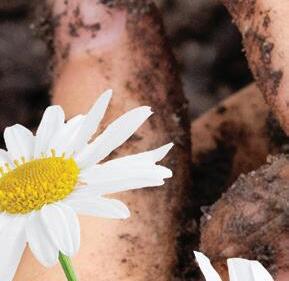





FOR


HEALTHY SOIL IS IMPORTANT FOR GROWING HEALTHY PLANTS!


You can buy a testing kit from a gardening shop to check the PH level of your soil.
The PH level will tell you whether your soil is acidic or alkaline – you need it to be between 6–7.5 to grow healthy plants. If the PH is too high, it means the minerals in the soil aren’t balanced enough to grow healthy plants. But if the PH level is too low, it means there aren’t enough minerals and nutrients in the soil to help the plants thrive.

2

Add homemade or store-bought compost and manure to your soil to help provide the natural minerals and nutrients that will help plants grow.



3
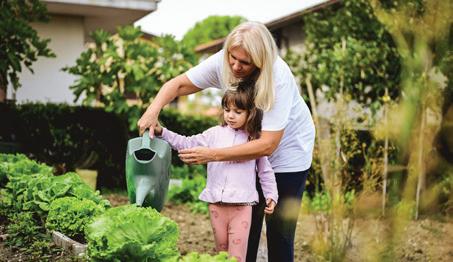
Water and drainage are important for keeping soil healthy. Too little water and the soil can become dry, hard and compact; too much and your soil will be muddy and loose. By adding mulch to your garden, you will help to retain moisture in the soil underneath and prevent it from drying out in the hot sun.







Soil is alive!
Many organisms that live in soil play a part in its health. Just like our gut, soil has a microbiome! In fact, there are more microorganisms in a teaspoon of healthy soil than there are people on Earth.






Tin cans (empty, washed and with the label removed)
Hammer
Nails


4

Paint
Paint brushes





Small-sized rocks
Soil
Succulent plants












Re-use old cans to make colourful planters for succulents. soil. Planting can improve the soil




Some plants can improve soil quality by attracting helpful bugs (such as lady beetles) and adding different minerals to the soil. Planting chamomile, chicory, mustard plants, marigolds or nasturtiums can improve the soil quality and help nearby plants grow.










With the help of an adult, use the hammer to nail three holes in the bottom of the can. This will help provide drainage for the plant.





1 3 2 4 6
Using the paint and a paintbrush, decorate the outside of your planter. You could paint them as animals, faces or with patterns.

of
Fill ¼ of the bottom of the can with small rocks.

Add a layer of soil on top of the rocks (filling the can to the top).
















Make a hole in the soil with your finger and plant the succulent. Pat down the soil around the plant.



Water the plant and place it in a sunny spot. It will only need to be watered 1–2 times each month.









































































































































































